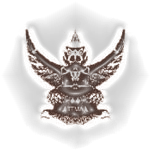It is said that there are many people who have chronic headaches in addition to headaches as symptoms associated with colds and high blood pressure. Of the Japanese over 15 years old, one in three people has a "headache" and more than 30 million people are worried. It is often thought that it is "a headache" because it is so familiar, but there are times when it interferes with life when it becomes severe, and there is a life-threatening disease behind it.
Among them, the most common is a headache called migraine, and in some cases, you suffer from pain that you can't stand because of the pain of Askinskin, which makes you feel like you have a pulse. Migraine is said to be a pain caused by the expansion of blood vessels in the brain after contracting once, and stress, irregular sleep, odors and sounds, and dazzling light are considered to be the causes. Migraine is caused by a sudden expansion of blood vessels in the brain for some reason. By dilates the blood vessels of the brain, the surrounding trigeminal nerve is stimulated, and the inflammatory substances generated by the stimulation further expand the blood vessels and develop "migraine". When you are released from mental and physical stress, the blood vessels may suddenly dilate, and "migraine" is more likely to occur on weekends when there is no work. In addition, excessive sleep, lack of sleep, fluoress variations in female hormones, hunger, fatigue, strong stimulation of light and sound are also considered to be a catalyst for migraine.
On the other hand, "tension-type headache" occurs when the muscles next to the head and the muscles of the shoulders and neck are tense. It is a pain that occurs when the blood flow deteriorates due to muscle tension, waste products accumulate in the muscles, and the nerves around it are stimulated. The cause of "tension-type headache" is often mental and physical stress, a disease that is likely to occur in people who have been taking the same posture for a long time, such as computer operation. In addition, there is also a "tension-type headache" that is caused by mental illness such as depression, not muscle tension, and some people have "migraine".
Headaches from premenstrual to early menstruation are thought to be caused by a decrease in serotonin due to a decrease in female hormones by dilating blood vessels. Tension-type headaches caused by tense neck and shoulder muscles and poor blood flow cause a pain so that the neck and occipital muscles can be tightened due to fatigue from the eyes and stress that comes from computer work, which continues to be in the same posture for a long time. In addition, there is also a headache caused by a brain disease, it is necessary to examine what is the cause when the pain is strong or prolonged.
In modern medicine, it is considered to be classified as migraines, tension-type headaches, cluster headaches, headaches associated with head injuries, headaches associated with vascular disorders, headaches associated with non-vascular intracranial diseases, headaches associated with metabolic diseases, headaches associated with infectious diseases, and so on. For headaches associated with intracranial and metabolic diseases, it is only possible to administer painkillers as symptomatic therapy because headaches cannot be cured easily unless the original disease is cured.
In Oriental medicine, headaches are thought to be caused by a variety of factors, such as stress and overwork that cause "ki" and "blood" circulation, weak gastrointestinal functions and excess "water" accumulates in the body. Stiffness in the neck muscles may also cause headaches by inhibiting blood flow. Tension-type headaches are mainly related to liver. The treatment focuses on approaching the energy line of the liver and relieving tension around the neck and shoulders. |













